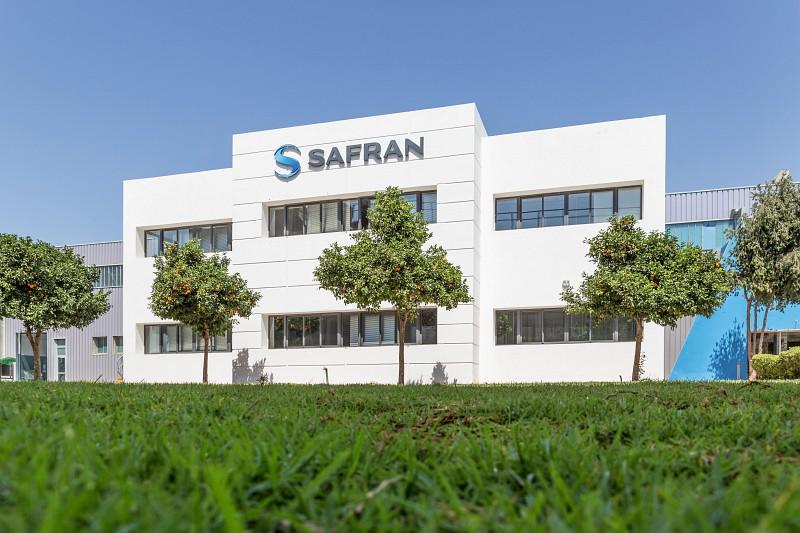Morocco aerospace push tightens sovereign risk premium
Safran (EPA:SAF) complex anchors Morocco’s aerospace upgrade; spillovers to Airbus (EPA:AIR) and Boeing (NYSE:BA) deepen exports, while FDI above 3% of GDP and low CPI sustain eurobond spread compression through 2028.

Morocco’s agreement with Safran to build a €350 million aircraft-engine complex at Nouaceur marks a structural move from components toward certified engine assembly, testing, and maintenance, repair and overhaul. In an economy of roughly $140–$150 billion GDP, the capex is modest in size but decisive in signal: it elevates value-added, hard-currency earnings, and technological depth, reinforcing a policy mix that has prioritized export-oriented manufacturing and macro stability.
The addition of engine-grade capability complements an industrial base where autos and aerostructures already anchor goods exports, while the MRO franchise introduces recurring, less cyclical cash flows aligned with global fleet utilization rather than new delivery cycles. The macro backdrop is supportive: headline inflation has cooled toward the low-2% area in 2025, the policy rate is around 3%, and public debt has steadied in the high-60s percent of GDP, maintaining fiscal credibility and room to crowd in private capital rather than crowd it out.
Mechanisms that translate the project into macro outcomes operate through three channels. The trade channel raises unit export value and domestic content: LEAP engine assembly and shop visits expand tooling, testing, and precision services, lifting local value capture beyond traditional aerostructures. Aerospace exports, near $2 billion in recent years and growing double-digits, gain a higher-margin layer less sensitive to airframe cycles.
The labor-productivity channel improves wage quality without eroding competitiveness: value-added per worker in aerospace commonly exceeds $70,000 annually—multiples of textiles and basic assembly—because certification, reliability, and safety, not unit labor cost, drive pricing power. The capital-flow channel is catalytic: Morocco’s net FDI has trended in the low billions of dollars annually; anchor investments from blue-chip manufacturers typically crowd in 1.5–2.5x supplier capex within five years, deepening supplier stickiness and reducing leakage of upstream value to Europe and North America.
Sectorally, the complex leverages Morocco’s logistics and policy architecture—Midparc free zone connectivity, Mohammed V Airport throughput, and Tanger-Med’s maritime scale—to compress lead times into Europe’s aerospace corridor and support nearshoring from longer Asian chains. As global air travel normalizes, MRO’s countercyclical traits matter: even during demand plateaus, time- and cycle-based maintenance secures shop visits and dollar receipts. A footprint designed to process mid-hundreds of engines annually by the decade’s end, with about 900 direct jobs and multiple-turn indirect employment, would lift Africa’s share of aerospace value-added and tighten domestic demand for technicians. Human-capital throughput—vocational programs, OEM-aligned certifications, and quality management—becomes the binding constraint; if scaled on time, wage premiums can coexist with stable export margins given a competitive real effective exchange rate and a hedgeable euro exposure profile.
Global market read-through is straightforward. Sovereign risk premia have compressed as inflation moderated and policy credibility held; sustained execution on the industrial pipeline should reinforce that trend. A feasible baseline has FDI holding at or above 3% of GDP, aerospace exports surpassing $3 billion by 2028 as engine work ramps, and the current-account gap narrowing below 2% of GDP on stronger services and goods receipts. On equities, linkages span the OEM-supplier web: Safran (EPA:SAF), Airbus (EPA:AIR), Boeing (NYSE:BA), and Morocco’s auto cluster where Renault (EPA:RNO) and Stellantis (NYSE:STLA) already anchor scale. FX dynamics should remain range-bound if euro receipts grow alongside hedging discipline, while renewable-power integration into the complex buffers operating costs and reduces energy-import sensitivity.
Risks are concentrated in execution and cycle turns. Engine programs carry certification risk and a low tolerance for logistics slippage; delays would push revenue recognition to the right and defer the MRO ramp. A weaker-than-expected eurozone expansion would trim flight hours and defer shop visits, while higher fuel costs or tighter carbon pricing would compress airline cash flows and indirectly pressure maintenance budgets. Labor-market depth matters: without accelerated technician training and retention, throughput and first-pass yield can slip against global benchmarks, forcing derates to capacity plans. Policy mitigants include modular commissioning, early supplier localization with performance covenants, and guaranteed renewable power to stabilize cost curves and meet ESG procurement screens.
The forward test is measurable and time-anchored. By end-2026, construction milestones and initial certifications should be evident. By 2027–2028, validation requires aerospace exports above $3 billion, net FDI at or above 3% of GDP, eurobond risk premia sustaining below the mid-200-basis-point range, and MRO throughput hitting planned run-rates with first-pass yield near 98%. Meeting these marks would confirm Morocco’s transition from assembly hub to engine-grade industrial jurisdiction and justify further spread compression and index-weight upgrades.





